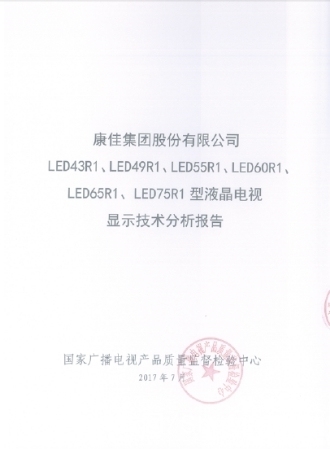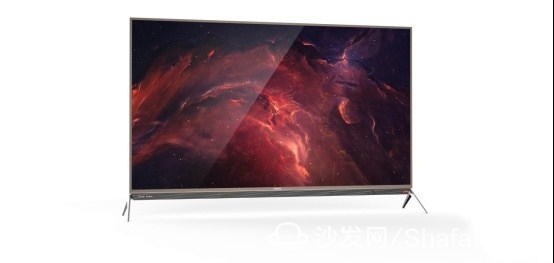Recently, the National Radio and TV Product Quality Supervision and Inspection Center organized technical experts to analyze the display technology of Konka R1 inverter TV. The analysis report shows that the technology of chip frequency conversion, backlight frequency conversion and screen frequency conversion adopted by Konka R1 frequency conversion television can effectively increase the refresh frequency, change the contrast and adjust the backlighting frequency in real time, and is in line with Konka's requirements for variable frequency television. The frequency conversion television was certified by the national authority inspection agency, which laid the leading position for Konka to create a new era in the display technology field.

The full name of the three institutes is the Third Institute of the China Electronics Technology Group Corporation (Television Electroacoustic Research Institute), established in 1960. The National Radio and TV Products Quality Supervision and Inspection Center under it is a state-level inspection with third-party fairness status. Institutions are also the earliest domestic inspection agencies for full performance testing of audio and video products. R1 TV, as the latest new TV released by Konka in 2017, can be tested and certified by the three companies, which fully demonstrates R1's superior display technology.

Three experts believe that the local contrast technology used by Konka R1 divides the entire screen into 48*27, a total of 1296 partitions, according to the brightness and darkness of different partitions, and the brightness of the surrounding partitions. The brightness contrast is adjusted individually and in real time. Different from the existing market, ordinary TV adopts a single dynamic brightness curve to adjust the picture, creating a more detailed picture quality effect.

The chip frequency conversion technology (MEMC) can evaluate and evaluate the motion trajectories of different dynamic images, thereby performing motion picture compensation calculations at different frequencies, thereby effectively improving the ubiquitous network video to improve the compression rate and resulting in a lower signal refresh rate. The disadvantages are that the signal refresh rate is increased to 60Hz, which directly promotes the improvement of display problems such as blurring, halos, aliasing, smearing, and jitter on the edges of the moving picture.
The backlight dimming technology (Local dimming) can use LED backlight tubes to adjust the characteristics of the partition, according to the light and shade of the image to adjust the strength of the LED backlight. By distributing the backlight on the lower side of the TV module, the total is divided into 16 zones. The brightness of each zone can be individually controlled according to the need of displaying images at different positions of the screen, and the current duty cycle can be adjusted. Thus, while improving the contrast of the television display, it also has the effect of energy saving and power saving.
Through the analysis of the key components and technical principles of Konka R1 products, the advanced nature of the inverter TV has been widely recognized and highly praised by three technical experts. After the report came out, it caused a strong reaction in the industry. With the long-term research and polishing of display technology, R1, the new inverter TV, has become the best endorsement of Konka's TV professionalism.
Smart TV/box information can focus on smart TV information network sofa butler (http://), China's influential TV box and smart TV website, providing information, communication, TV boxes, smart TVs, smart TV software, etc. Answering questions.





